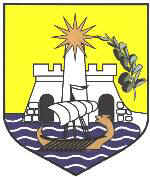|
|
The people
The population of Ulqini (about
22,000) is a complex community in origin,tradition, cultural and social
characteristics, which gives this town a unique charm and variety.
Albanians ,Montenegrins and members of the other peoples and nationalities
of Yugoslavia live here. The Albanians are the majority about 85% of the
populations.
Ulqini has assimilated descendants of Barbary Moors from Algeria who were
settled here by Turks to defend the town, and Blacks, descendants of the
numerous slaves brought here from Africa.
On the market days ,Tuesdays and Fridays, the center of the town becomes a
real attraction. The colorful folk costumes of the various ethnic groups
from surrounding villages is an outstanding photographic motif amply
exploited by tourists and excursionist from all over Europe who come to
visit Ulqini. For tourists who have come to spend their holidays in Ulqini,
it is an experience not to be missed, even if it means skipping the beach
for one day.
Ulqins folk costumes are traditional mark of this region and have
preserved their original features even during the 20th century. Regardless
of numerous cultural contacts, the costume has remained the part of the
folk culture that has changed least and showed greatest tenacity.
There are several different folk costumes in this region: Montenegrin. the
costume worn by Albanians in Ulqini itself-the city costume, the costume
worn by Albanians in field of Anamali, the Bregasor, Shestan, Malesor, and
Goran (Merkojevic) costumes.
All types of traditional costumes where homemade . Wool, cotton, flax and
silk were used to make them, and every household had a horizontal loom on
which the women wove. Besides weaving, the women also did embroidery,
sewed on applique and knitted.
|
 |
Responsible for
content pursuant tož 6 MDStV: Shaban Burri
The author is
not responsible for any contents linked or referred to from his
pages - unless he has full knowledge of illegal contents and would
be able to prevent the visitors of his site fromviewing those pages.
If any damage occurs by the use of information presented there, only
the author of the respective pages might be liable, not the one who
has linked to these pages. Furthermore the author is not liable for
any postings or messages published by users of discussion boards,
guestbooks or mailinglists provided on his page. |
|








